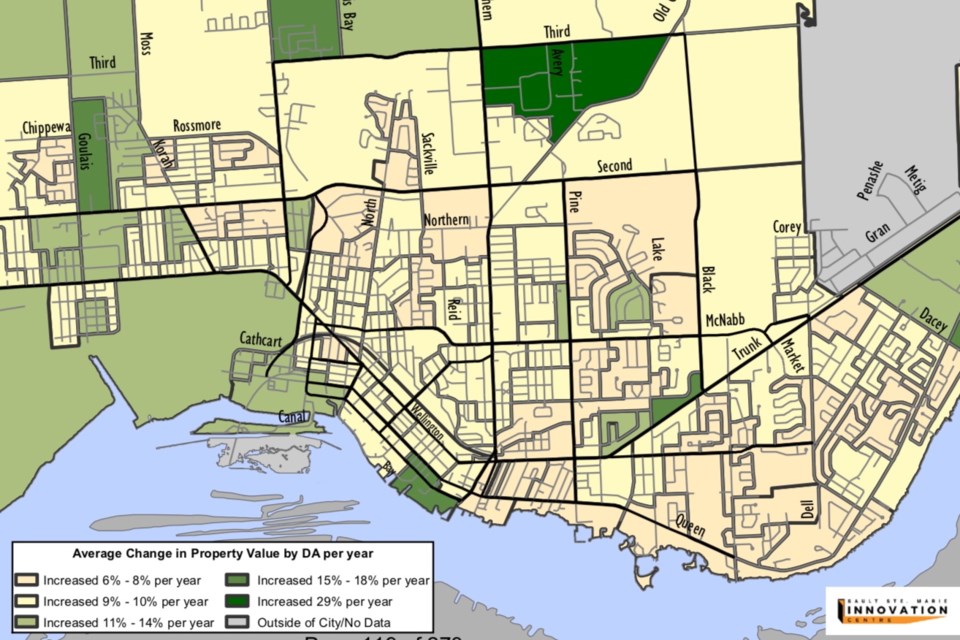Tucked away in a part of this week's City Council agenda that attracted no attention, were two maps of interest to anyone following local real estate prices.
Prepared by the Acorn Information Solutions division of Sault Ste. Marie Innovation Centre, the maps show those parts of the city that experienced the highest and lowest increases in assessed property value during the decade between December, 2008 and January 2019.
Full-size versions of both maps can be viewed by scrolling down on this page. Please click on the link beneath each map to view the larger version.
The first map shown includes commercial, industrial, institutional and other property types.
The second map shows residential properties only.
The maps were part of a report by Don McConnell, the city's planning director, exploring municipal assessment growth.


The following is an edited version of McConnell’s comments on the assessment maps:
The first map (Overall Assessment) includes all properties in the city. The only areas with decreased property values during the 10-year timeframe are Algoma Steel and two areas in the eastern part of the downtown.
The decrease in property value in these areas is the result of reassessments by the Municipal Property Assessment Corporation (MPAC) or demolitions in advance of new development.
With the electric arc furnace project at Algoma Steel and future development in the downtown, additional assessment is anticipated in all three areas.
This drawing also indicates that the Gateway/James Street area had neither an increase nor decrease in property values over the 10-year timeframe.
The second map (Residential Assessment) shows that no area in the community has had a decrease in residential property value.
Increases in all parts of the community averaged more than six per cent per year with significant increases corresponding with areas of new residential development.
As the 2019 data is based upon the 2017 reassessment, it does not include any recent increases in the value of local homes. The reassessment that was scheduled for 2021 has been paused by the province.
No residential area has seen a decrease in property values. It is important to note that major increases in residential property values occur in those areas that have recently seen significant residential development. Older, well-established residential areas generally have very little vacant land that can be used for new development.
The exception to this has been the redevelopment of former elementary schools which have been converted to residential uses.
The city has two specific initiatives to encourage new residential development. Both apply to the entire community but both have mostly been used in older areas.
The first initiative has been to support residential intensification and the development of second units. The Official Plan and zoning bylaw have recently been amended to permit the creation of second units in any single detached, semi-detached or townhouse dwelling or within an accessory structure on the same lot.
The second initiative has been in effect since 2014 and allows a tax increment equivalent grant (or rebate) for new development projects which result in four or more rental units. Approximately 300 new rental units have been constructed under this program.
The SSM District Social Services Administration Board also has two initiatives which support new residential development in older residential areas.
DSSAB has been working with Habitat for Humanity to construct new homes on vacant properties. The city has contributed to this initiative by providing vacant municipally owned properties throughout the community.
DSSAB has also created an affordable home ownership program in partnership with Sault College in which properties in a state of disrepair are renovated. In addition to providing housing for low income community members, this program teaches various building and maintenance skills.
Taken together, these initiatives encourage new residential investment and help to maintain the residential assessment base throughout the community.
